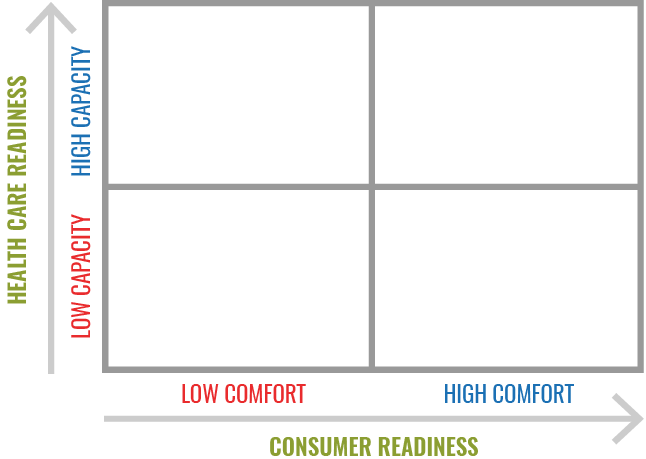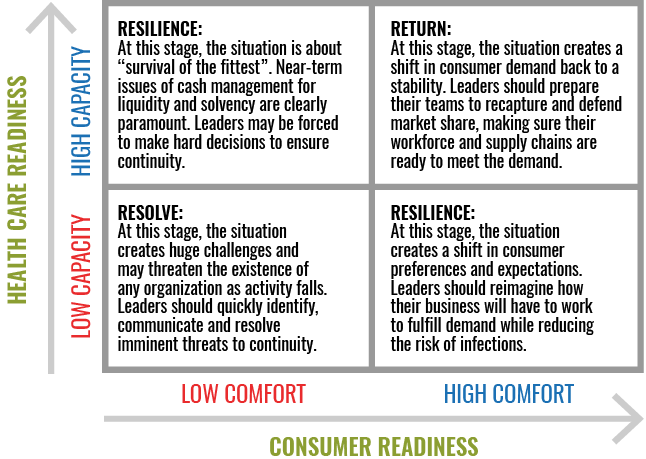Current Impact & Future Trends
Current Impact
The Greater Des Moines Partnership recognizes the need and accepts the challenges associated with providing information and leadership in this uncertain and rapidly changing environment. The Partnership has published guidance for Greater Des Moines (DSM) organizations related to COVID-19 in its Rapid Response Hub. The Hub will be updated with current information and guidelines regarding the impacts of COVID-19.
COVID-19 has had a tremendous impact on the United States, including Iowa as a state and DSM as a region. For the most up-to-date status of COVID-19 cases and deaths across the state of Iowa and within DSM, please visit the Iowa COVID-19 Tracker: iowacovid19tracker.org.
The State of Iowa began its phased reopening plan as of early May. As this information continues to change rapidly, the State has compiled a list of Governor Reynolds’ ongoing news updates, including COVID-19-related proclamations, here.
Future Trends
In the coming months, each organization and industry will follow a different path to identifying and navigating how business will evolve and stabilize after the pandemic. It is important that business leaders assess their own position relative to the changes brought by COVID-19 and identify the appropriate cadence for planning their next steps.
The operational cadence towards building the “new normal” for each industry will depend on both health care capacity and consumer readiness. These factors will act as a compass as organizations plan for phased reopening and prepare for the possibility of additional outbreaks.

Health care readiness is defined as the ability of the health care system to minimize and combat the public health crisis. It can be measured through three dimensions:
|
Disease Conditions:
|
Health Care Capacity:
|
Virus Monitoring System:
|
|
A decrease in new cases, ICU cases and death rates related to COVID-19 in an area reflect the capacity of the health care system to minimize and combat the crisis.
|
A high capacity health care system would have adequate ICU beds, ventilators, health care PPE and staff capacity, in line with its demographics, including the size of the vulnerable populations.
|
High capacity to handle a crisis would include sufficient testing capacity, reasonable testing turnaround times, the ability to screen large numbers of asymptomatic individuals and the presence of robust contact tracing with the ability to rapidly inform and quarantine affected individuals.
|
The other main consideration for leaders is consumer readiness. This is defined as the level of comfort consumers have in engaging with an organization to obtain its products or services. Unlike health care readiness, which is a sector’s collective capacity at a point of time, the consumer readiness to engage varies. This readiness will reflect the perceived risks associated with the level of personal interaction required to get the goods or services from any particular industry.
Countries affected by the pandemic earlier serve as examples of what could happen in DSM. As China reopens, they have relatively high health care readiness resulting from effectively flattening the curve i.e., low numbers of new cases and low death rate. They have also developed and implemented an effective virus monitoring system through a contact tracing app. However, consumer readiness is lagging as the public continues avoiding high traffic areas dampening the recovery of brick-and-mortar retail. As such, one could anticipate that sectors such as manufacturing may recover faster than hospitality, retail or tourism.
It is important to note that health care readiness can be drastically impacted and even reversed. This was evident when the reopening of Hokkaido, Japan led to an increase in COVID-19 cases and a second wave of infections which led to a new state of emergency 26 days after the previous emergency declaration was lifted. A shift from high readiness to low readiness is fluid and organizations must be adaptive in their short-term planning.
The future state will be fluid and dynamic. It is critical for leaders to be aware of and measure both health care readiness capacity and consumer readiness in order to create effective strategic plans.
There are four broad strategic plans that business leaders should consider in relation to the health care readiness vs. consumer readiness matrix.

The following tactics could be considered throughout the 2x2 matrix outlined above, shifting tactics as the situation in the industry changes:
Sales
- Prioritize Revenue: Given the uncertainty and fluid situation of the crisis, business leaders will be forced to prioritize sales efforts, leveraging data to reallocate capital to efficient sales efforts.
- Customer Focus: Business leaders will need to listen and be more attentive to customers in an effort to understand what they value most, post-COVID-19. It will be important to leverage these insights as they develop and tailor new experiences.
- Partnership and Ecosystems Mindset: COVID-19 impacted many supply chains and sales channels. This calls on business leaders to adapt and collaborate with non-traditional partners, to rebuild damaged networks or build new ecosystems.
Operations
- Digitalization: COVID-19 will serve as an important accelerator for digitalization throughout value chains. This will allow firms to be more flexible and adapt quickly to changes in supply and demand. We also anticipate firms adopting digitalization to allow organizations to be more cost transparent, providing data-driven diagnostic tools. Business leaders may adopt an “as services” model to move away from fixed cost models.
- Supply Chain Diversification: Business leaders will further diversify their supply chain to hedge against potential future disruptions. This may involve sourcing from multiple countries or even moving to regional suppliers, cost permitted.
Human Resources
- Agile Culture: By now, leaders should appreciate the ability to be nimble and agile to react to the rapid market changes during the COVID-19 crisis. Faster decision-making and a flatter organization allow an agile culture to grow within the organization.
- Safety First: Until a vaccine is widely available, employees will be constantly wondering if their health is at risk, impacting their anxiety levels, motivation, productivity, etc. Beyond ensuring their health and wellbeing, leaders should make sure that communication about safety policies and processes is clear.
- Training at Scale: The pandemic has changed the skills and knowledge required for staff in some industries, notably an increased need for technological literacy. The ability and infrastructure to train employees quickly to adapt to market changes is critical.